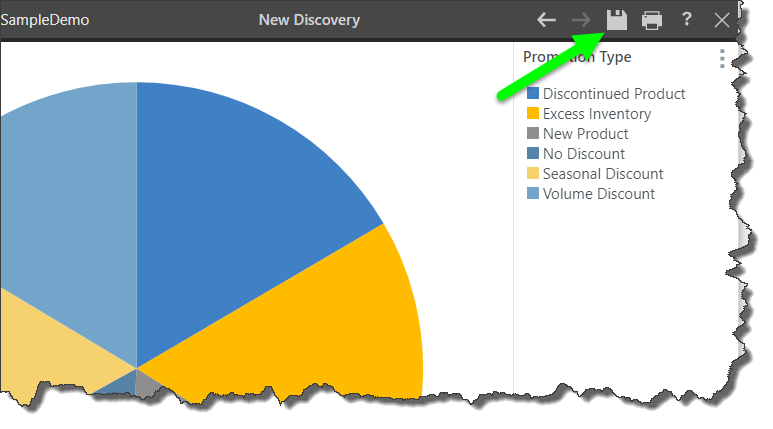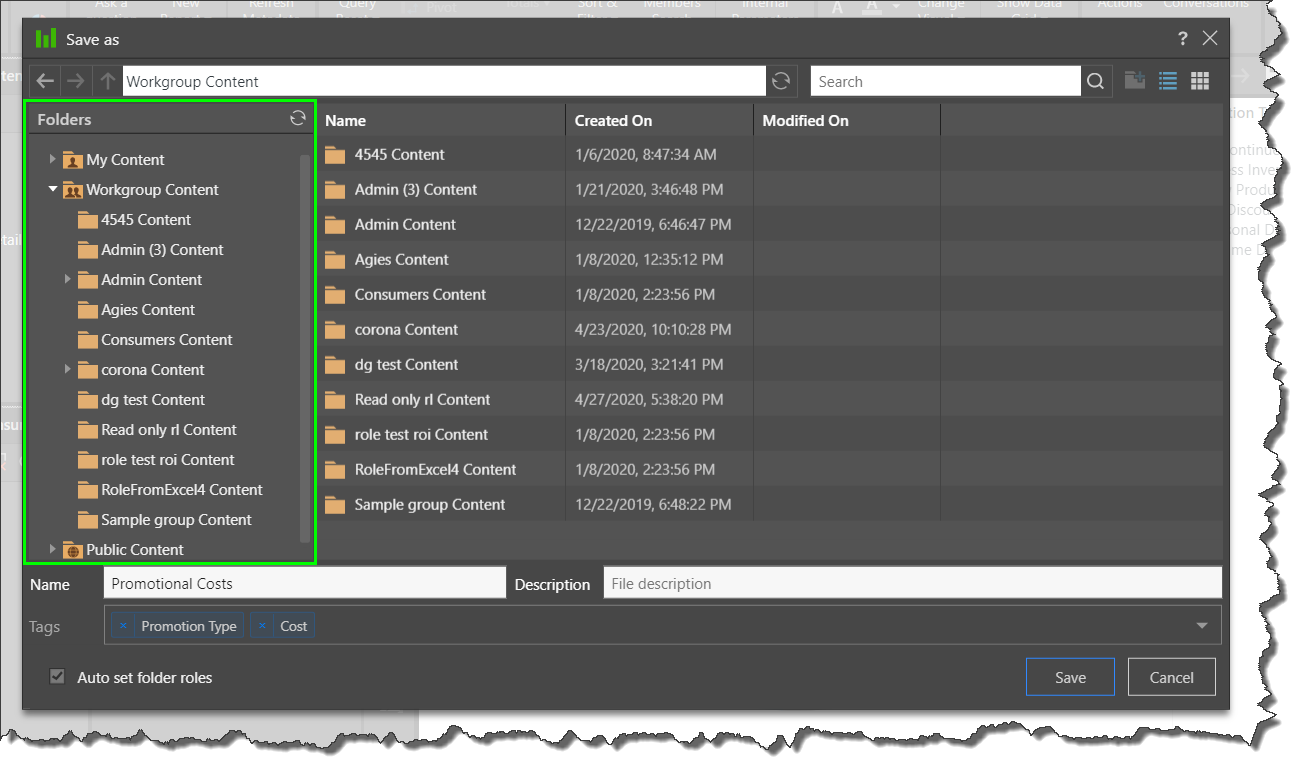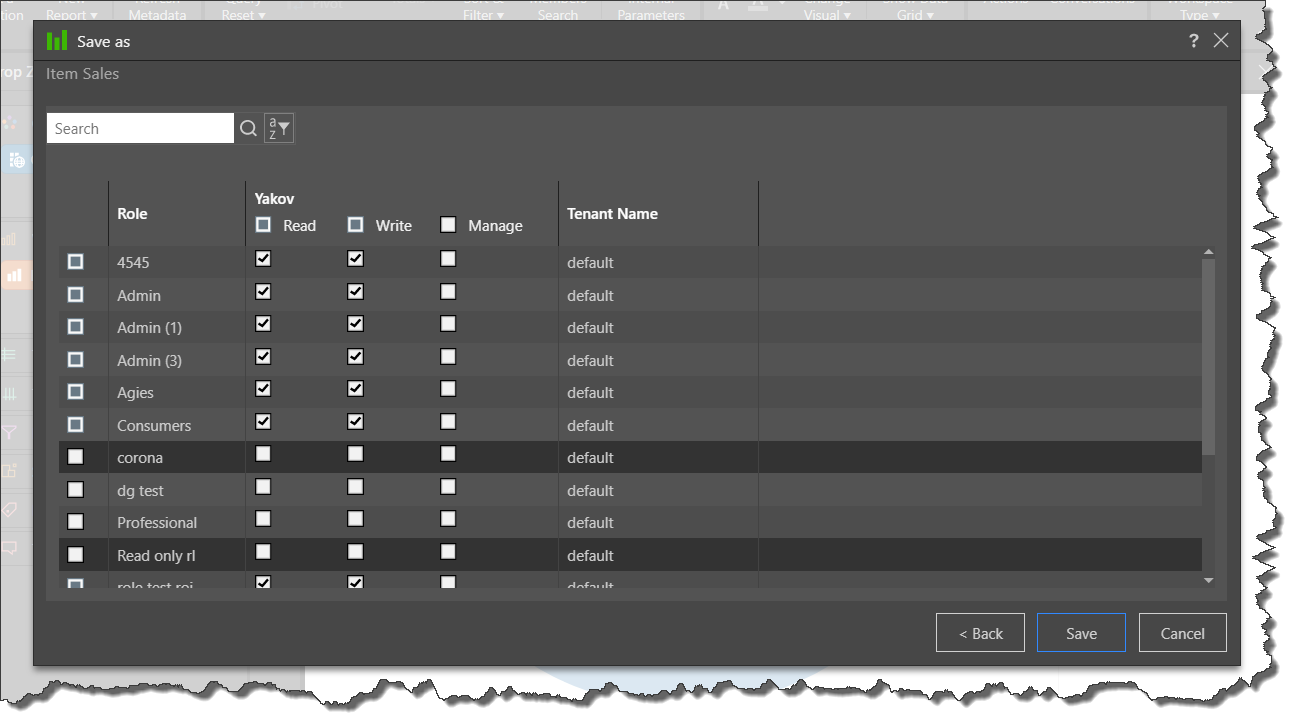Save and Share
Once you've built your discovery, you can save it to the required content folder location, and share it with other Pyramid users. Depending on the roles assigned to those users, they may be able to view your discovery, interact with it, modify it, or use it to build presentations, publications, infographics, and advanced calculations.
Save your Smart Discovery
There are 2 ways to save your smart discovery:
Save from Smart Discover
Click Finish to open the Save As dialog.

From the Save As dialog (see below), select the required folder location, name your discovery, and click Save. Your discovery will be saved and opened in Discover Pro.

Save from Discover Pro
Click the x to close Smart Discover.

Your discovery will automatically be opened in Discover Pro; click the save icon to open the Save As dialog. Choose folder location where the discovery should be saved, name your discovery, and click Save.

Folder Types and Sharing
You can manage who has access to your discovery based on the folder in which you save it. The folder tree in the Save As dialog displays 3 main folders: My Content, Workgroup Content, and Public Content. You must save your discovery within one of these parent folders.

My Content
'My Content' is your own personal content folder; the items that you save here cannot be accessed or seen by other users. Discoveries that you don't want to share with others should be saved here.
Note: Admins can view all content saved to your My Content folder.
Workgroup Content
The content in your 'Workgroup Content' folder is accessible to all other users who share your security roles. It is a shared folder that allows you to easily share content with other users without setting any permissions or security for that content. Items that you want to share with other users who share your security roles should be saved here.
Note: users who have access to the content saved to the Workgroup folder have full write permissions to that content.
Public Content
'Public Content' is another shared folder, but unlike Workgroup Content, access to each content item can be set according to user roles. This gives you more control over you can see and access your content.
As a non-admin user, you can determine whom within your role groups will be able to see or change this content. Administrators, however, will be able to set this access amongst all roles in the system.
Set Role Access
By default, Pyramid automatically sets role access to items saved in the Public Content folder. If you want to set role access to your discovery manually, deselect the 'Auto set folder roles' option (green highlight below), then click Next (blue arrow)

You will then be able to set Read (view), Write (edit), and Manage (set role access) permissions by role. Click here for more details about setting role access to content.

Learn More
Click here for more details about saving discoveries, including setting permissions for public content, navigating the Save As dialog, tagging content, and more.